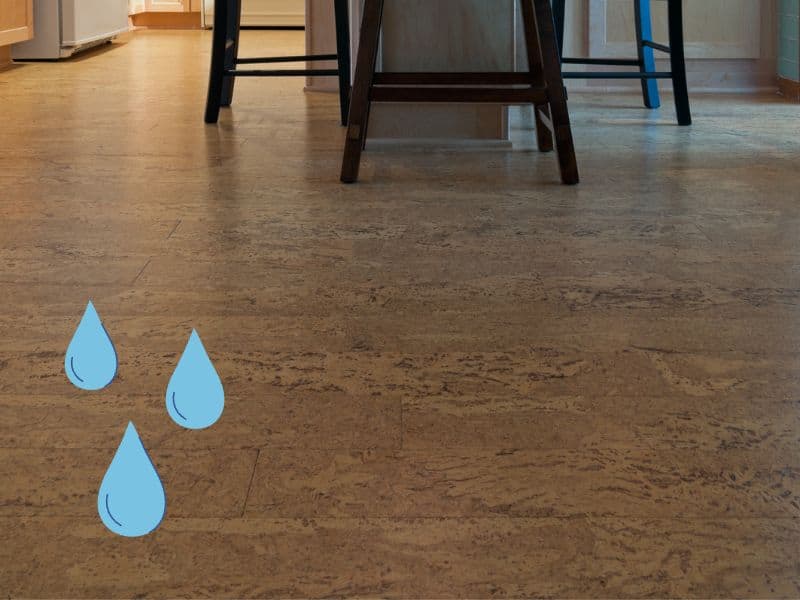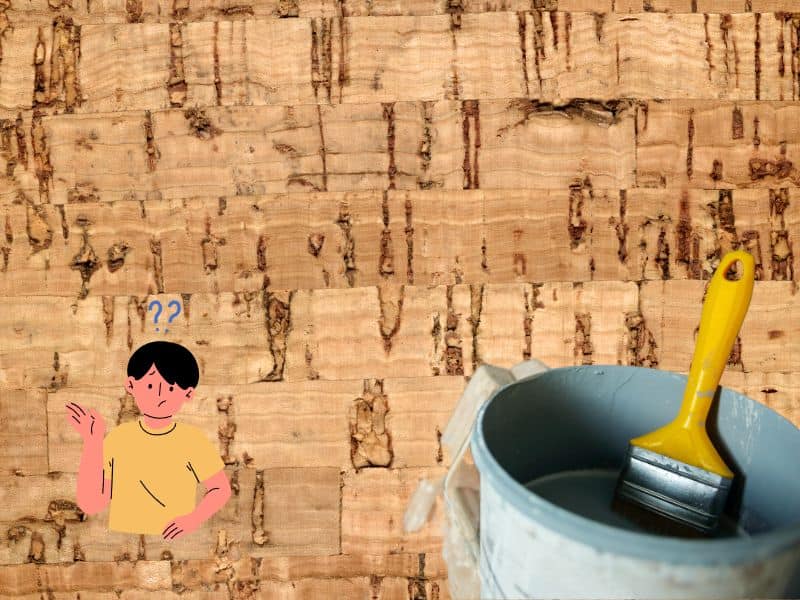Your Ultimate Cork Building Material FAQ: Questions Answered

Cork building material is a type of construction material made from the ground, compressed outer bark of cork oak trees.
If it’s your first time trying to incorporate this material into your construction projects, you’ll have a plethora of cork building material FAQs you want to be answered before kicking off.
People use cork building materials in their projects due to their sustainability, excellent insulation, and durability. However, you may be apprehensive if you don’t know what to expect when using these materials. Are they durable? If so, is it advisable to paint them for longevity?
This is your ultimate cork building material FAQ for these and the answers to more questions.
You’ll get answers to all your queries, giving you the confidence to use cork as your go-to sustainable material. So, let’s jump in and demystify this amazing natural building material.
What Properties of Cork Flooring Make It Suitable for Kitchens?

To understand the properties of cork flooring that make it suitable for kitchens, we must start by looking at what goes on in the kitchen.
Kitchens are in constant contact with water, oils, food particles, high temperatures, and the occasional impact from a dropped pan or utensil that can damage the floor. Therefore, a suitable floor for the kitchen must be able to withstand these elements.
Cork flooring has the following properties that make it ideal for kitchens:
Highly Water Resistant
Cork flooring is highly water resistant because it contains suberin.
Suberin is an impermeable layer between mesophyll cells and the bundle sheath. This layer is highly resistant to water, thus making cork flooring an excellent option for kitchens.
Also, cork has millions of closed air cells that resist water absorption, making cork a great option for areas prone to moisture in the kitchen.
High Elasticity
You’ll agree with me that most people cook while standing. These long hours of standing call for comfortable and soft flooring that bounces back when you step on it.
Due to its honeycomb structure, cork’s cells are filled with air. The air allows compression to about half its thickness and decompression without losing flexibility. The ability to undergo compression and decompression makes cork highly elastic.
Cork flooring is comfortable to walk on due to cork’s elastic nature. The material absorbs shock, cushions the feet, and helps you stand for long periods without discomfort.
Heat Resistance
Kitchens are prone to high temperatures due to continuous cooking activities. High temperatures can cause some flooring to crack or warp, especially if not installed properly.
Cork is highly heat resistant due to its composition. The air within its cells blocks most heat from getting through the layers. As a result, cork flooring is suitable for kitchens as it can withstand high temperatures without cracking or warping.
Safety in the Kitchen

Due to its very nature, a kitchen presents many safety risks, including:
- Slipping: It’s a common hazard due to water and oil spills.
- Fire Hazards: Open fire from cooking stoves is a hazard in its own right, and dropping hot or burning items onto the floor can cause damage to it.
With a coefficient of friction of around 0.5, cork has the high frictional quality necessary to prevent skidding. Therefore, it’s not easy to slip on cork flooring, even when wet.
Cork’s fire-retardant properties make it ideal for kitchens.
Heat Insulation Properties
Kitchen temperatures are mostly high when cooking. Consequently, we want to dissipate heat as much as possible. This is especially necessary on hot summer days.
Cork has poor thermal conductivity (0.036-0.38 W/mk) and high R-values (R-3.6 to R-4.2). These properties make cork flooring an effective insulating material.
Cork’s heat insulation properties help maintain a comfortable temperature in the kitchen, even when it’s hot outside.
Is Cork Made of Wood?
Contrary to popular belief, cork is not made of wood.
Let’s consider cork’s chemical composition to understand why it’s not made of wood.
According to a study by Science Direct, it was revealed that suberin is the major structural component of cork, accounting for 42.3%. However, this substance is not found in wood.
Moreover, the study revealed that cork has high extractives (11.7%) and lipophilic compounds, unlike wood.
If cork was made of wood, we would expect its chemical composition to display high amounts of cellulose and lignin. However, since this is not the case, we can confidently agree that cork is not made of wood.

Is Cork Flooring Durable?
Cork flooring is highly durable due to the following qualities:
High Elasticity
Cork’s high elasticity means it retains its shape even after experiencing heavy foot traffic. This makes cork flooring suitable for areas with high foot traffic and furniture indentations.
Unlike other flooring materials that deform due to pressure, cork flooring can take a lot of pressure without any visible deformation.
Water Resistance
Cork has natural water resistance qualities due to its suberin layer and honeycomb cell structure. Thanks to its high water resistance, molds, and mildew find it hard to survive on cork flooring.
Consequently, you don’t have to worry about water seeping into the floor and causing damage.
Waterproof Cork Flooring for Bathroom – Is It Good for It?
Waterproof cork flooring for bathrooms is good because it’s designed to resist water penetration and prevent skidding.
Although cork is waterproof, it absorbs water after prolonged exposure. For instance, when cork is soaked in water for 48 hours, it absorbs water, leading to an expansion of up to 3% by weight.
Therefore, since bathrooms are prone to long hours of exposure to water, waterproof cork flooring for bathrooms requires additional moisture sealing to make it watertight.
The flooring is often sealed with a polyurethane or wax-based sealer that prevents water from seeping in and damaging the floor.
Can You Paint Cork Flooring?

Although you can paint cork flooring, it requires initial preparation to ensure the paint spreads evenly and sticks to the floor.
Cork is porous; therefore, it must be sealed with an appropriate sealant before painting. The two best sealers are:
- Primer: It’s ideal for a porous, textured look because it doesn’t fill the pores.
- Shellac: It’s ideal for a smoother substrate look because it fills the cork pores.
Moreover, you must sand and level the cork floor’s surface before painting to ensure a smooth finish.
Once you’ve completed the pre-painting preparation, apply your chosen paint.
Keep in mind that cork flooring will require additional coats of paint for full coverage and protection against wear and tear.
It’s recommended to apply at least two sealant coats before painting.
After applying the first sealant coat, wait for it to dry completely based on the manufacturer’s instructions. Once dry, sand the floor with 220-grit sandpaper to smooth rough areas due to the sealer.
Apply the second coat and let it dry before painting with latex-based paint. You can also apply two layers of paint.
Is Cork Flooring Good for Basements?

Cork flooring is suitable for basements because it’s waterproof, durable, and highly insulating. These qualities make cork flooring suitable for basements in the following ways:
- Waterproof: Basements are susceptible to high moisture levels because they’re below ground level. Therefore, a good basement floor must be moisture resistant, able to withstand water seepage and prevent the growth of mold and mildew.
- Durability: The basement is often used for storage, recreational activities, or as an extra living space. Therefore, it should have a durable floor that can withstand heavy foot traffic and wear and tear. A good basement floor should be strong, scratch-resistant, and able to handle heavy objects without cracking or chipping.
- Insulation: Uninsulated basements can account for 20 percent of a home’s heat loss because they get cold and damp, especially in winter. Since cork flooring is an excellent insulator, it can help to keep the basement warm.
Cork Building Material FAQ – Final Thoughts
Cork building materials are an excellent option for residential and commercial spaces due to their durability, insulation, and waterproof properties.
Cork flooring can be used in bathrooms, basements, and other moisture-prone areas.
Before you leave, check out this guide to achieving a self-sustaining home for more sustainable building ideas.







